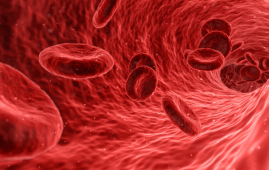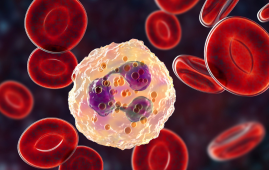

A Growing Concern in Pediatric Neurodevelopment
A recent JAMA Neurology study highlights the potential long-term neurodevelopmental consequences of prenatal chlorpyrifos exposure (CPF), a widely used pesticide. Children exposed in utero exhibited altered brain metabolism, disrupted neuronal differentiation, and enhanced myelination of the internal capsule, coupled with deficits in fine motor speed and motor programming. These findings raise crucial questions for pediatric neurologists, neurodevelopmental specialists, and environmental health clinicians regarding early-life chemical exposures and lifelong brain health.
Explore All Pediatrics CME/CE Conferences
Prenatal Chlorpyrifos Exposure, historically prevalent in homes and agricultural settings before its 2001 residential ban in the U.S., crosses the placenta and can accumulate in the developing fetal brain. Rodent studies have previously shown that early CPF exposure disrupts glial cell generation and neuronal differentiation, causing behavioral and cognitive deficits. The current study provides direct evidence of metabolic and structural brain changes in school-aged children, emphasizing the clinical relevance of early environmental exposures.
Advanced Imaging Reveals Brain Structural and Metabolic Changes
The research employed MRI, diffusion tensor imaging (DTI), arterial spin labeling (ASL), and magnetic resonance spectroscopic imaging (MRSI) to assess cortical thickness, white matter volumes, fractional anisotropy (FA), average diffusion coefficient (ADC), regional cerebral blood flow (rCBF), and N-acetylL-aspartate (NAA) concentrations in children aged 6–14. Key findings included:
- Increased cortical thickness in frontal, temporal, and posteroinferior regions, but reduced thickness in dorsal parietal regions.
- Inverse associations between CPF and local white matter volumes in multiple regions.
- Reduced rCBF and NAA concentrations in several brain regions, suggesting impaired neuronal metabolism.
- Fine motor and motor programming deficits, particularly in the nondominant hand.
These results indicate that prenatal CPF exposure may induce widespread neurodevelopmental and metabolic disruption, underscoring the importance of early detection and monitoring in at-risk populations.
Implications for Clinical Practice and Pediatric Care
For pediatric neurologists, occupational health specialists, and nurses, these findings highlight the need to consider environmental exposures when evaluating neurodevelopmental delays, motor skill deficits, and cognitive challenges in children. Understanding the molecular mechanisms of oxidative stress, inflammation, mitochondrial dysfunction, and oligodendrocyte dysregulation can inform both preventative strategies and therapeutic interventions. Although limited by sample demographics, this study reinforces the critical need for environmental risk assessment and continued research into chemical exposures during pregnancy.
“Prenatal CPF exposure is associated with disrupted neuronal development and motor function in children, revealing a key window for neuroprotection,” said the study team.
For More Information:
Peterson, B.S. et al. (2025). Brain Abnormalities in Children Exposed Prenatally to the Pesticide Chlorpyrifos. JAMA Neurology. doi:10.1001/jamaneurol 2025.2818. https://jamanetwork.com/journals/jamaneurology/fullarticle/2837712
more recommended stories
 Fat-Regulating Enzyme Offers New Target for Obesity
Fat-Regulating Enzyme Offers New Target for ObesityKey Highlights (Quick Summary) Researchers identified.
 Spatial Computing Explains How Brain Organizes Cognition
Spatial Computing Explains How Brain Organizes CognitionKey Takeaways (Quick Summary) MIT researchers.
 Gestational Diabetes Risk Identified by Blood Metabolites
Gestational Diabetes Risk Identified by Blood MetabolitesKey Takeaways (Quick Summary for Clinicians).
 Phage Therapy Study Reveals RNA-Based Infection Control
Phage Therapy Study Reveals RNA-Based Infection ControlKey Takeaways (Quick Summary) Researchers uncovered.
 Pelvic Floor Disorders: Treatable Yet Often Ignored
Pelvic Floor Disorders: Treatable Yet Often IgnoredKey Takeaways (Quick Summary) Pelvic floor.
 Urine-Based microRNA Aging Clock Predicts Biological Age
Urine-Based microRNA Aging Clock Predicts Biological AgeKey Takeaways (Quick Summary) Researchers developed.
 Circadian Control of Neutrophils in Myocardial Infarction
Circadian Control of Neutrophils in Myocardial InfarctionKey Takeaways for HCPs Neutrophil activity.
 E-Cigarette Use and Heart Attack Risk in Former Smokers
E-Cigarette Use and Heart Attack Risk in Former SmokersKey Takeaways for Clinicians and Nurses.
 36-Week Pre-eclampsia Screening May Reduce Term Risk
36-Week Pre-eclampsia Screening May Reduce Term RiskA New Preventive Strategy for Term.
 Cardiovascular Risk and Sudden Cardiac Death in Diabetes
Cardiovascular Risk and Sudden Cardiac Death in DiabetesRising Sudden Cardiac Death (SCD) Risk.

Leave a Comment